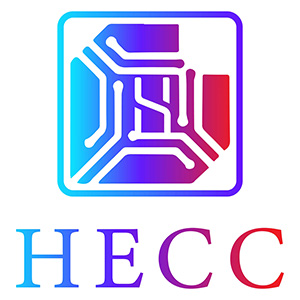Software defined cars are rapidly becoming a reality, and engineers are continuously exploring the rapid rise and development trends of automotive networks to meet the needs of the automotive industry.
In the past 40 years, the design of cars has undergone astonishing changes. From the initial strengthening of mechanical aspects such as power steering and anti lock braking, to the evolution of electronic control and instrumentation later on.
Modern cars may still follow the original design intent of car inventor Henry Ford, but their operational pipelines are completely different. Modern cars have become a platform for interconnected electronic systems, and with the growth of battery powered electric vehicles and fully autonomous driving capabilities, this trend continues to accelerate.
Since the mid-1970s, the Electronic Control Unit (ECU) has been a very important vehicle function, serving to optimize the management of engine fuel injection and timing. Later, the electronic system was integrated into more vehicle functions, from the gearbox to comfort control, from suspension to track anti slip control. So, the number of ECUs increased significantly. Initially, each ECU only performed a single function with little or no interaction.
When the number of ECUs in some car models reaches over 150, the automotive industry begins to integrate these into fields such as body and transmission systems in the next two decades. The increase in the number of sensors used and the interaction between different functions highlights the need to improve the in car network.
The in car network is constantly evolving to manage the increasingly new electronic features.
The evolution of in car networks
There are standard connection pipelines in the industry between ECU, sensors, and actuators. In the mid-1990s, the Society of Automotive Engineers (SAE) developed the J1939 specification for ECU interconnection. This standard introduces the Informative Controller Area Network (CAN) communication protocol, which has been used in high-speed vehicle networks for decades. Other traditional low-speed serial buses and multi-point network communication protocols (such as FlexRay, Media Oriented Systems Transport (MOST), and Area Interconnect Networks (LIN)) paired with CAN have become the focus of attention, while automotive E/E (Power/Electronics) architecture engineers are still working hard to meet the needs of high-speed networks.
When CAN was first introduced, its maximum data transmission rate was only 150 kb/s. Later, after continuous improvement, the 10 Mb/s CAN-FD (Elastic Data Rate) communication protocol was introduced. Recently, the approved CAN XL communication protocol has expanded the bandwidth to 20 Mb/s.
Even if the data transmission rate has doubled, advanced driving assistance systems and other technologies still require higher speeds. In terms of safety and security features, visual sensors, front millimeter wave radar, and LiDAR have become very popular. Popular ones include lane departure warning, emergency braking, and adaptive cruise control, all of which require ultra high reliability, high bandwidth, and low latency networks to maintain efficient operation.
Ethernet, as the primary IP based enterprise network communication protocol, has been adopted by automotive applications. The fundamental difference between Ethernet and automotive Ethernet (100Base-T1, 1000Base-T1, and 10Base-T1S-10 Mb/s to 1 Gb/s) lies in the physical layer, which has the advantages of lower cost, lighter weight, and lighter weight for single masked or unmasked twisted pair. This Ethernet method is called Single Pair Ethernet (SPE), which is a physical media interface that has quickly gained adoption in other market areas such as industrial automation.
But the more electronic systems there are, the more copper wires are still needed. To interconnect ECUs, sensors, actuators, and human-machine interfaces for information and entertainment, it is necessary to rely on heavy-duty looms, which poses a challenge for high-ranking leaders in the automotive E/E industry.
The additional weight of cables and systems is a significant challenge, especially for battery powered electric vehicles, where weight determines the driving range. The wiring harness is becoming heavier and the volume is constantly increasing, and the design and installation are also becoming more complex. Therefore, automotive engineers must shift the platform from a domain based approach to a regional architecture.
From a domain centric approach to a complete regional architecture
With the increasing interdependence of interconnected systems, the form of one vehicle, one server, or gateway is becoming increasingly popular. Therefore, software defined cars are rapidly becoming a reality.
The domain cabling method uses high cost, lengthy, and cumbersome wiring harnesses, while the regional system uses backup Ethernet backbone to serve each region while connecting all major vehicle functions.
Engineers are removing Chaotic domain wiring and replacing it with a central server and a regional architecture (Source: NXP)
Aggregating multiple ECU functions to a central server and offloading or delegating specific edge tasks (such as window control) to regional controllers (all connected to the automotive Ethernet backbone) not only reduces weight but also complexity. Through this method, some car functions can also be converted into software services, moving towards the goals required for fully automated driving vehicles and achieving software defined cars.
In addition to the physical layer advantages of automotive Ethernet networks, this communication protocol also introduces some ideal features and latest enhancements originally developed for industrial applications. Of note is the Time Sensitive Network (TSN), which provides deterministic network behavior, which is crucial for security critical functions.
Undoubtedly, the Ethernet network will eventually replace CAN. But currently, the automotive industry will continue to deploy CAN and other slower networks. After all, CAN is still suitable for many applications, and Ethernet networks are still too expensive and complex to replace CAN.
In addition to the rise of Ethernet protocols in automotive networks, the demand for high-speed application specific interface communication protocols has also brought opportunities for new standards. One example is Mobile Industrial Processor Interface (MIPI) A-PHY, an asymmetric point-to-point or daisy chain interface communication protocol that can provide up to 16 Gb/s ultra fast unidirectional data connection and power supply with just one unmasked twisted pair (UTP) cable. MIPI A-PHY is the only car interface that natively supports MIPI CSI-2 cameras and DSI-2 display interfaces, making it ideal for advanced driving assistance systems and entertainment applications.
The accelerated rise of in car networks
Over the past 40 years, vehicle technology has made significant progress. Fashionable, intuitive, and informative touch screens have replaced analog dashboards and switches. In addition, modern vehicles have become safer by incorporating ADAS functions such as emergency braking and blind spot detection.
Because cars generate a large amount of data, they are often described as data centers with wheels added. Cars, like any data center, rely on stable and powerful networks to operate safely and reliably.

 Aaron
Aaron 